Midwest Book Review, The Irish Clans, Book Three, Rising – Irish to the Core Weekly Blog 31
Today I want to share with you the recent review of my third The Irish Clans novel titled Rising.
A) Midwest Book Review by Diane Donovan, Donovan Literary Services
Rising, The Irish Clans Book Three by Stephen Finlay Archer, Manzanita Writers Press 9780998691008
Book 3 of The Irish Clans, Rising, continues the evolving story of Irish rebels Tadgh and Morgan, and Irish Canadian Collin, whose sister is still missing. Here, Tadgh and Morgan participate in the Dublin Easter Rising while Collin makes the decision to leave his wife and newborn son to continue his search for his missing sister in Ireland.
As the Clan continues to look for the Clans Pact treasures and faces many opponents, the tides of war rise. The 1916 era is brought to life by Stephen Finlay Archer’s attention to not just historical detail, but interpersonal relationships.
As events move from Canada to Ireland and characters move beyond their comfort zones to tackle new problems and possibilities, readers gain a vivid sense of the times, its influences, and the conundrums faced by all as the world changes: “This is only the beginning, Sean. You mind me. We will exterminate the British here in Ireland.” O’Casey pretended not to hear.
From a battle on the Irish Sea at Dublin, Ireland to terrible situations experienced by those devoted to the Cause in that city, and clues provided in the Clans Pact, readers receive a combination of treasure hunt, evolving social and political challenges, and changing hearts and minds. Each character is charged with operating outside of their experience and expectations, growing from their decisions and world influences alike.
Between dangers on the waters to intrigue on shore, Archer juxtaposes disparate journeys of life and death and brings tension to a riveting new level as each character searches for answers, lives through atrocities, and uncovers answers to their personal and political conundrums.
It is hard to say what is more compelling: the intrigue and plots evolved by rebels Tadgh and Morgan as they struggle to uncover the Clans Pact secrets, or Collin’s desperate attempts to find his missing sister against all odds.
Sometimes, the love for one’s life and country clash. Sometimes the characters despair of any kind of resolution that will allow them to live in freedom, health, and happiness.
The intrigue and questions keep Rising fast paced as Archer highlights the ideas and actions that lend to an inevitable clash, personalizing Irish and world politics in a manner that will keep even readers without a ground in Irish affairs engrossed and wondering what will happen next.
That is because each character’s individual perspective, efforts, and convictions shine in a story replete with action, unexpected twists, and ongoing challenges.
Historical fiction and Irish readers are in for a treat.
B) Author Insight for Rising
The 1916 Irish Easter Rising of patriots was destined to be a military failure. Except for militant James Connolly, Leader of the Irish Citizens Army (ICA), the leaders of the Rising had academics backgrounds and participated in pastimes like the Gaelic League with noble ideals to restore the Gaelic way of life. Padraig Pearse who was the prime author of the proclamation of the Irish Republic and who was briefly named President of the Republic was the chief spokesperson for the rebels. He was the leader who had given such a fiery eulogy for O’Donovan Rossa eight months earlier.
There were setbacks just prior to the Rising and it was postponed one day until Monday April 24. As the 1400 rebels headed out that consequential Monday from the ICA headquarters, Liberty Hall, armed with some antiquated rifles and farm implements, Connolly was heard to say to one of his compatriots, “We’re going out to be slaughtered, Bill.”
Although there were minor uprisings in other parts of the country, the main organized effort was in Dublin itself, due to disruptive factors.
The Clans had been successful in the Irish hills prior to the pitched battle of Kinsale in 1602 by using guerrilla hit and run warfare tactics. The strategy to occupy key strongholds in Dublin during the Rising including the General Post Office (GPO) as a headquarters and then to defend them was ill conceived . . . like painting a target on your back. Or maybe not.
Connolly was convinced that the British would not destroy their own city. Wrong. They brought in 26,000 fully armed soldiers and cannons.
When the dust settled, the Dublin City populace were angry at the rebels for being the cause of such destruction and upheaval. They ridiculed them as they were being detained by the British military and called them traitors. Five hundred innocent citizens had been killed in the crossfire.
At Easter, on March 27th, 2016, the Republic of Ireland and the rest of the world celebrated the centennial of the Easter Rising. Instead of 1400 patriots, there were 250,000 people who came to honor the Rising martyrs and participants in Dublin. I watched the spectacle.
The military parade, the longest in Irish history, lasted five hours. At noon, outside the GPO a captain in the Irish Defence Force read the proclamation just as Pearse had done one hundred years before. This time there was wild cheering from the assembled crowd.
Clearly, Pearse’s long strategy worked.
You will have to read Rising to get the full picture and to find out why they used that strategy, what became of them, and what came afterward.
Stephen’s novel series “The Irish Clans” can be purchased at https://amzn.to/3gQNbWi


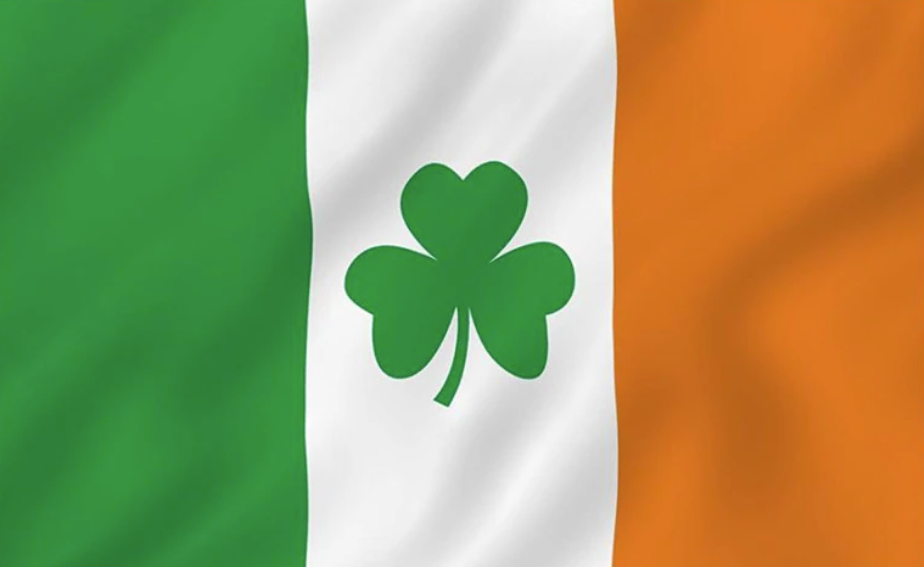
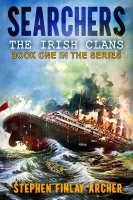



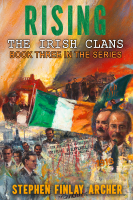

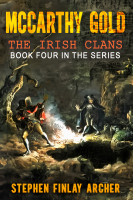

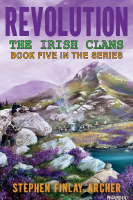

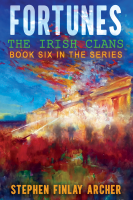

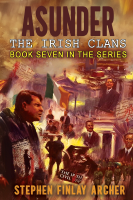

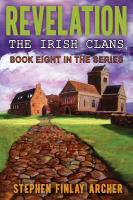

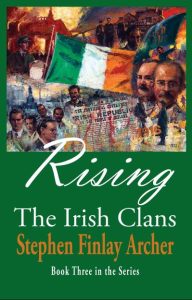
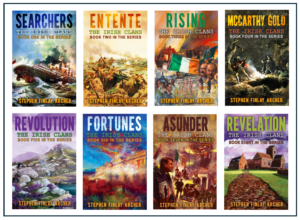
0 Comments